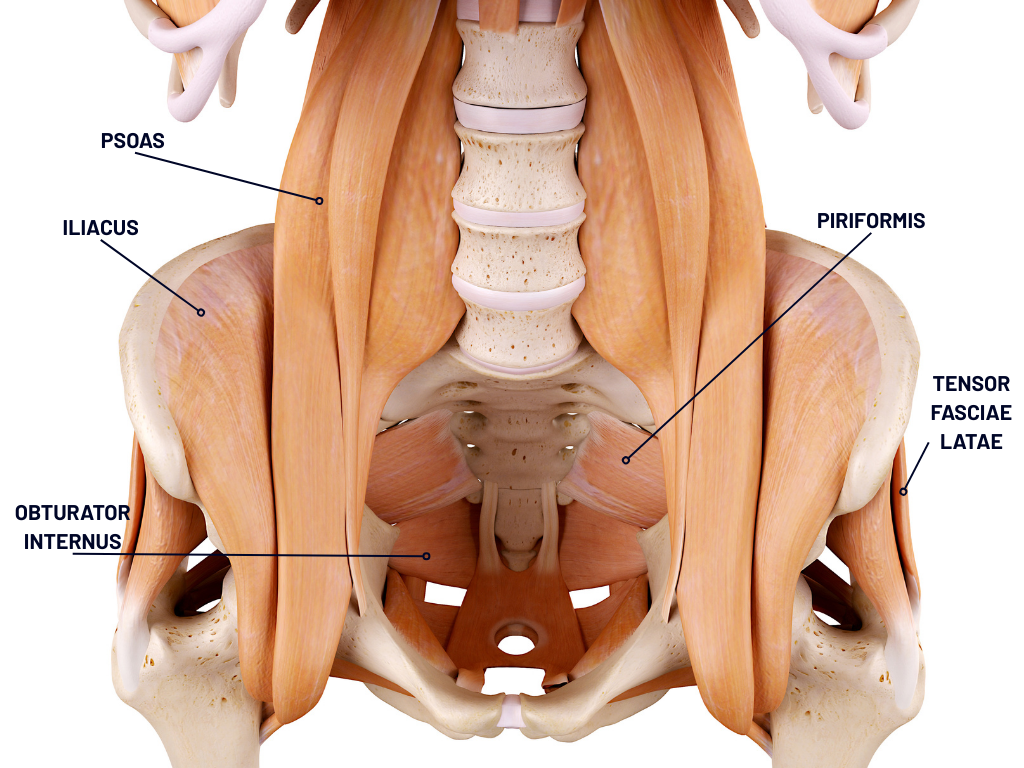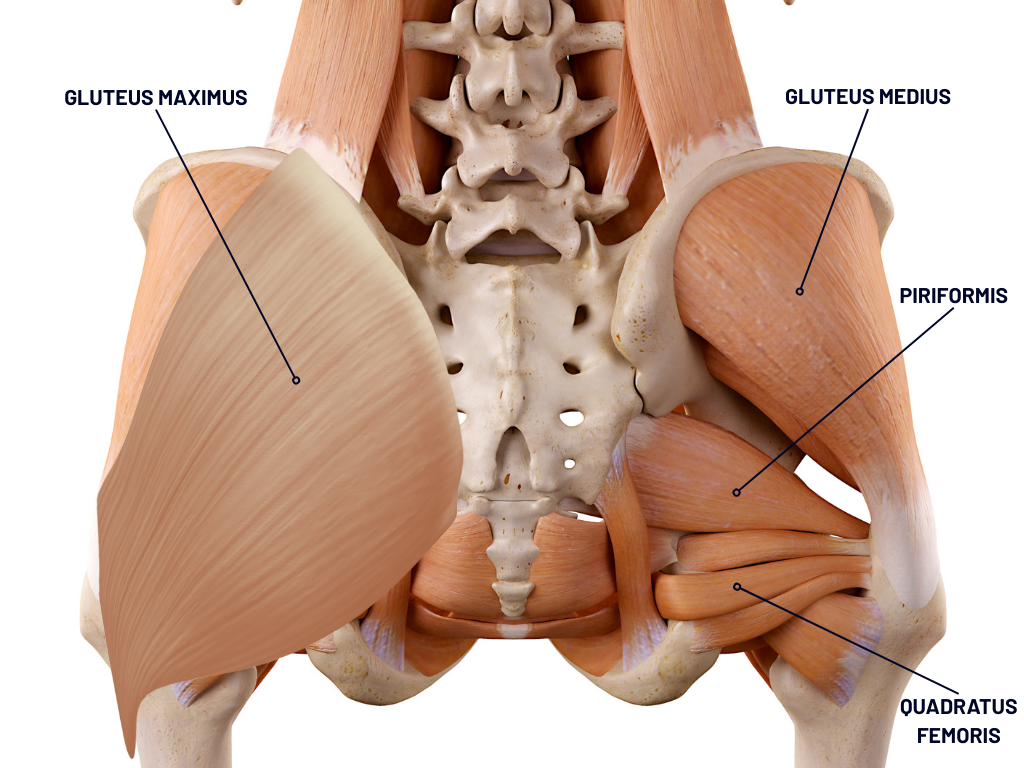Hip pain doesn’t just slow you down — it can change the way you walk, move, and live. Whether the cause is arthritis, bursitis, or a muscle strain, the right physical therapy exercises are one of the most effective ways to restore hip mobility and function.
Research shows that exercise therapy can significantly reduce pain and improve daily function in hip osteoarthritis. That’s because physical therapy isn’t about masking symptoms — it builds strength, balance, and flexibility that protect the hip joint long-term.
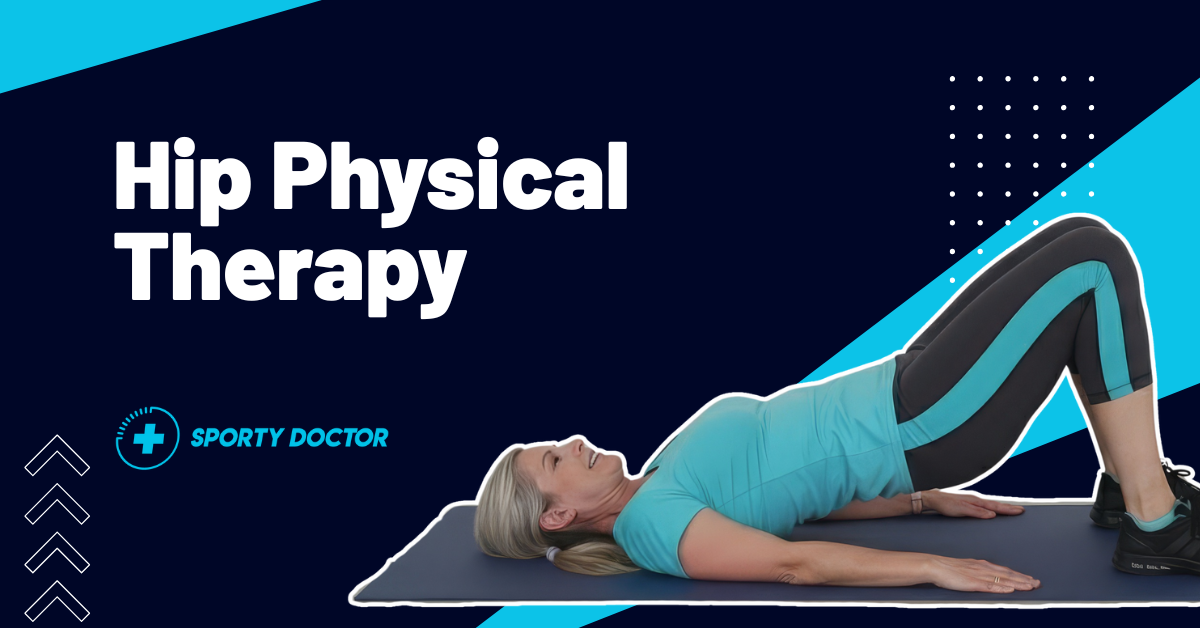
In this guide, we’ll break down warm-up drills, hip strengthening exercises, and stretches for the hip you can use for recovery and prevention. We’ll also cover exercises to avoid, pain management tips, and how to start your own PT program.
Understanding Hip Anatomy and Conditions
The hip is a ball-and-socket joint where the femur meets the pelvis. It’s supported by powerful hip muscles like the gluteus maximus, gluteus medius, and psoas, as well as the core muscles that stabilize the pelvis. When those muscles weaken or tighten, the hip joint is left vulnerable.
Common hip conditions include muscle strains, early osteoarthritis, bursitis, and postural imbalances such as anterior vs. posterior pelvic tilt. Inflammation and stiffness can limit range of motion and increase pain levels, especially during daily movements like climbing stairs or standing up from a chair.
Autoimmune conditions also play a role. The hip joint is affected in up to 28% of patients with rheumatoid arthritis (PubMed), underscoring how systemic inflammation can attack the hip. Over time, untreated problems may lead to more serious complications, including disability or hip surgery.
The good news: targeted PT exercises improve mobility, restore balance, and support recovery — giving your hips the stability they need to carry you forward.
Physical Therapy and Rehabilitation
Physical therapy works by addressing the root causes of hip pain. Instead of quick fixes, a physical therapist prescribes PT exercises that combine mobility drills, strengthening routines, and stretching for lasting change.
These exercises don’t just strengthen the hip muscles — they also promote core stabilization, improve balance, and reduce inflammation. Adding tools like a resistance strap or bands can safely increase difficulty without straining the joint.
Most importantly, PT is individualized. Your exact program depends on your hip condition, pain levels, and goals. But the following movements are some of the most reliable, evidence-based exercises for hip rehab.
Warm-Up & Balance Movements
Warming up the hip joint with balance work activates stabilizing muscles and improves coordination. These drills are gentle yet powerful in preparing your body for strengthening.
Sit-To-Stand
The sit-to-stand exercise mimics a movement we use dozens of times each day. By focusing on hip drive rather than pushing with the arms, it retrains the hip muscles to activate properly.
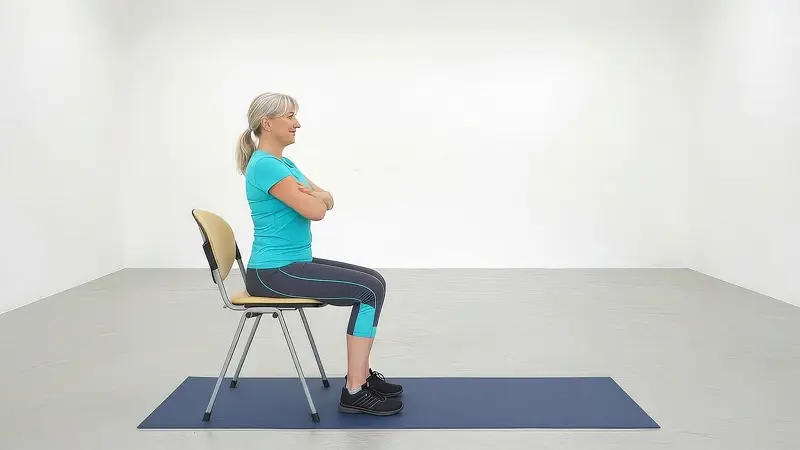
For patients with hip pain, this exercise restores independence. Practicing sit-to-stand builds confidence, improves balance, and reinforces a safe movement pattern that protects the hip joint from strain.
Clock Toe Tap
The clock toe tap challenges your balance in multiple directions, strengthening the hip abductors and core muscles as the standing leg stabilizes. By tapping around the “clock face,” you train the hip joint to adapt to real-life movements and sudden shifts in balance.
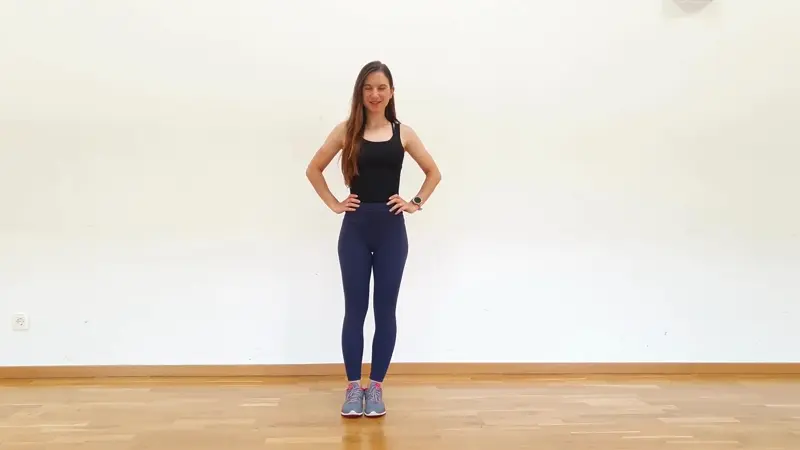
For adults managing osteoarthritis or bursitis, this exercise is especially effective — it improves balance and hip stability without adding impact or irritation.
Single Leg Bridge
The single leg bridge combines strength and balance in one movement. Lifting the hips while keeping one leg elevated forces the gluteus maximus and hamstrings to engage deeply, while also activating the core.
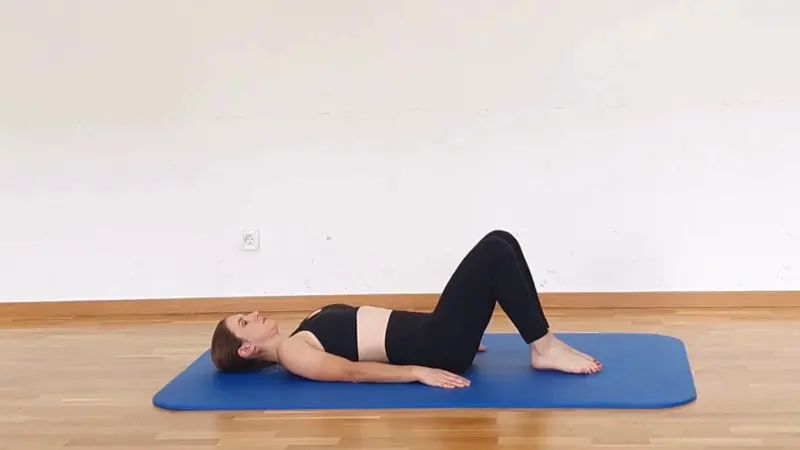
This exercise builds posterior chain strength, which is often underdeveloped in people with hip problems. It’s an ideal warm-up for more challenging hip strengthening drills.
Hip Strengthening Exercises
Strong hip muscles support the pelvis, reduce strain on the hip joint, and improve balance. For women over 50, strength training is especially important, not only for hip mobility but also for bone density and long-term health.
Glute Bridge
The glute bridge is a cornerstone of hip PT. It strengthens the glutes, activates the core, and stretches tight hip flexors — all while keeping pressure off the spine.
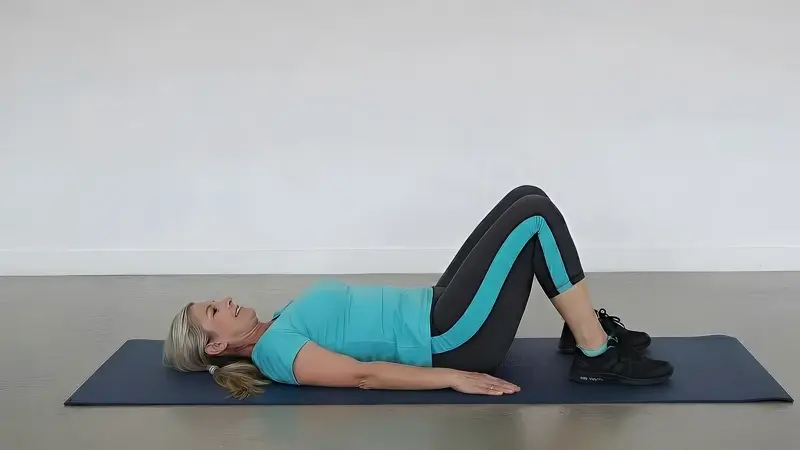
For rehab, it’s safe, effective, and highly adaptable. Resistance bands can be added for extra hip abductor activation, or you can progress to single-leg bridges as strength improves.
Clamshell Exercise
The clamshell exercise isolates the gluteus medius, a critical stabilizer of the pelvis. Weakness here often leads to hip collapse during walking, running, or climbing stairs.
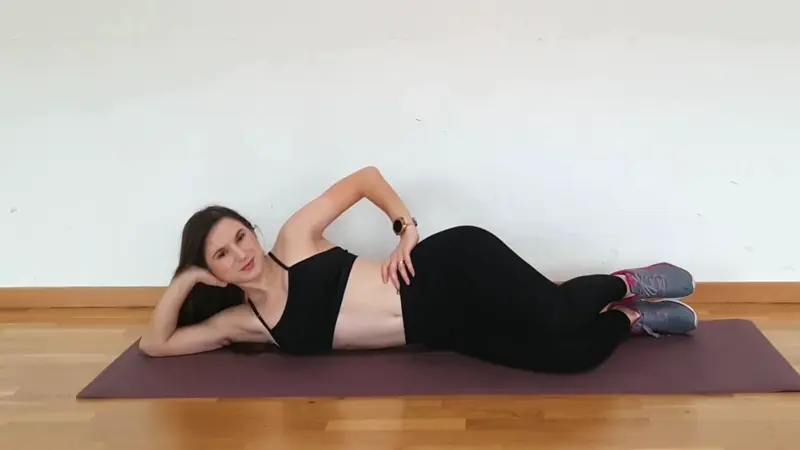
By strengthening the abductors, clamshells reduce stress on the hip joint and improve alignment. It’s a small movement with profound benefits for stability and injury prevention.
Banded Monster Walk
With a resistance band looped around the thighs, the banded monster walk activates the hip abductors and external rotators in a functional, standing position. It’s one of the best resistance band exercises for legs and glutes.
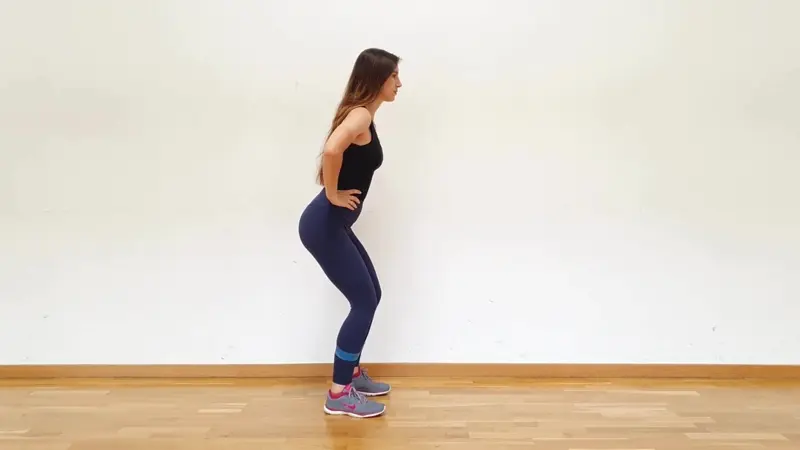
For hip pain recovery, monster walks train the body to stay strong in lateral movements — essential for stability during everyday activities and sports.
Single Leg Deadlift
The single leg deadlift is both a balance and strength exercise. By hinging at the hips while one leg extends behind, you strengthen the glutes and hamstrings while teaching the hip joint to stabilize under load.
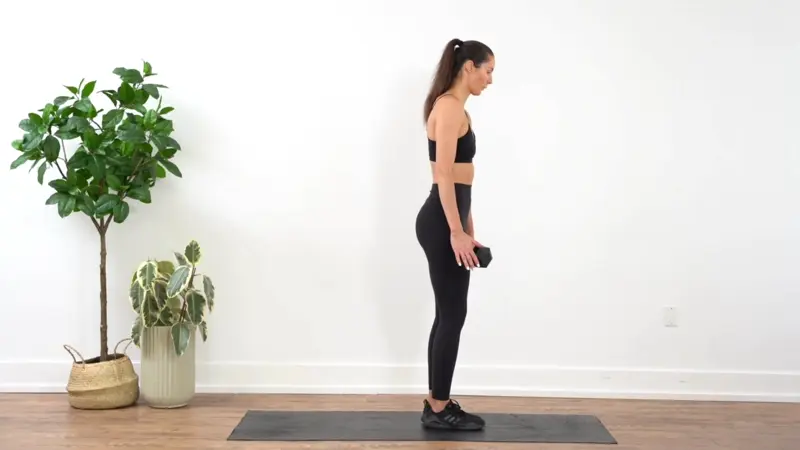
It’s especially valuable for weekend warriors who want to prevent injuries and for patients seeking to improve balance and hip mobility in a controlled, low-impact way.
Hip Stretches
Stretching reduces stiffness, promotes flexibility, and provides a cooldown after strengthening work. These stretches target the most common areas of tightness in hip pain.
Figure Four Stretch
The Figure Four stretch relieves tension in the deep hip rotators, especially the piriformis. It’s often used to address hip pain that radiates into the lower back or down the leg.
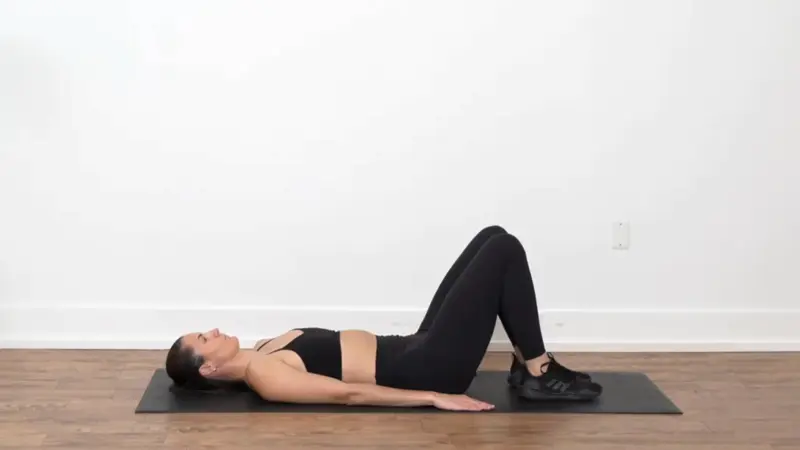
For patients with limited mobility, it can be performed lying down or seated. It’s gentle, effective, and a staple of hip rehab.
Kneeling Hip Flexor Stretch
Prolonged sitting often tightens the PSOAS and quadriceps, pulling the pelvis forward and straining the hip joint. The kneeling hip flexor stretch restores hip extension, improves posture, and eases discomfort linked to postural imbalances.
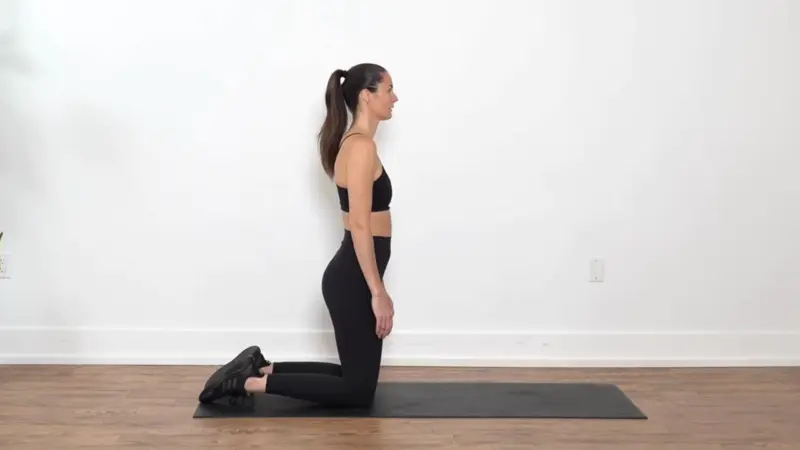
This stretch is particularly helpful for patients with hip arthritis or bursitis, as it reduces tension in the front of the hip without compressing the joint.
Banded Hamstring Stretch
The banded hamstring stretch uses a resistance strap to gently lengthen the hamstrings while lying on your back. This reduces strain on the pelvis and lower back, both of which are closely tied to hip function.

It’s safer and more accessible than seated hamstring stretches, making it ideal for older adults or those with limited mobility.
Exercises to Avoid
Not every exercise is hip-friendly. Some movements increase pressure on the hip joint, worsen inflammation, or irritate surrounding tissues. If you’re in recovery, avoid the following until cleared by a physical therapist. See our full guide on hip pain exercises to avoid for more detail.
- Deep squats below parallel
- Jump squats and other high-impact plyometrics
- Heavy weighted lunges
- Leg presses with high load
- Running stairs for conditioning
- Seated leg extensions with heavy weight
- Side lunges with poor form
Tips on Pain Management
Hip recovery isn’t just about exercises. Managing pain and inflammation helps you stick with your PT program consistently.
- Apply ice treatments after exercise to reduce swelling and irritation.
- Incorporate specific hip bursitis exercises if bursitis is the main issue.
- Focus on core stabilization to take pressure off the pelvis and hip joint.
- Track pain levels daily — don’t push through sharp or excruciating pain.
- Allow time for rest and recovery between strengthening sessions.
How Do I Get Started With Physical Therapy for Hip Pain?
The best way to start is by consulting a physical therapist who can evaluate your hip condition, pain levels, and goals. From there, a personalized program of PT exercises will help restore hip mobility, reduce inflammation, and improve balance.
Consistency is key. With regular practice, these movements can help you manage hip osteoarthritis, bursitis, and other conditions while avoiding more invasive treatments like hip surgery.
Even after formal rehab, continuing easy home exercises (like sit-to-stands and step work) a few times per week can keep improving your strength, balance, and daily function for months.
Your body is built to move—let’s keep it that way. With physician-designed routines for hip pain, flexibility, and mobility, the Sporty Doctor App makes it simple to follow evidence-based PT programs at home.
Download the Sporty Doctor app to start moving better, feeling stronger, and protecting your hips for life.
